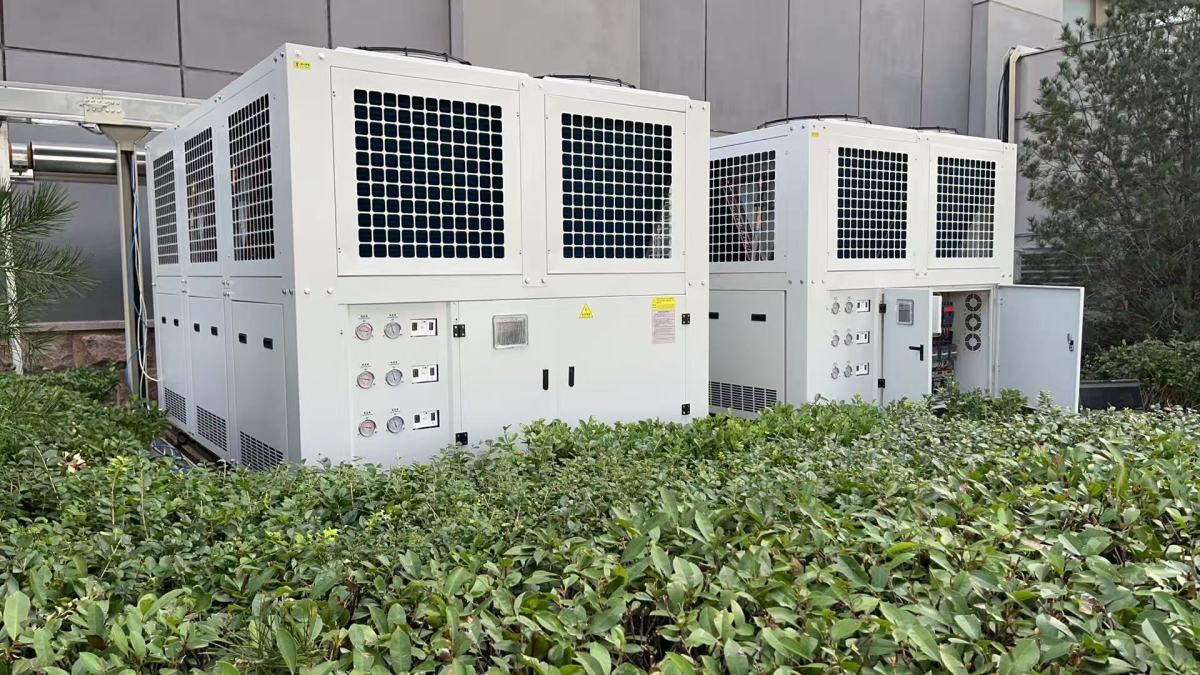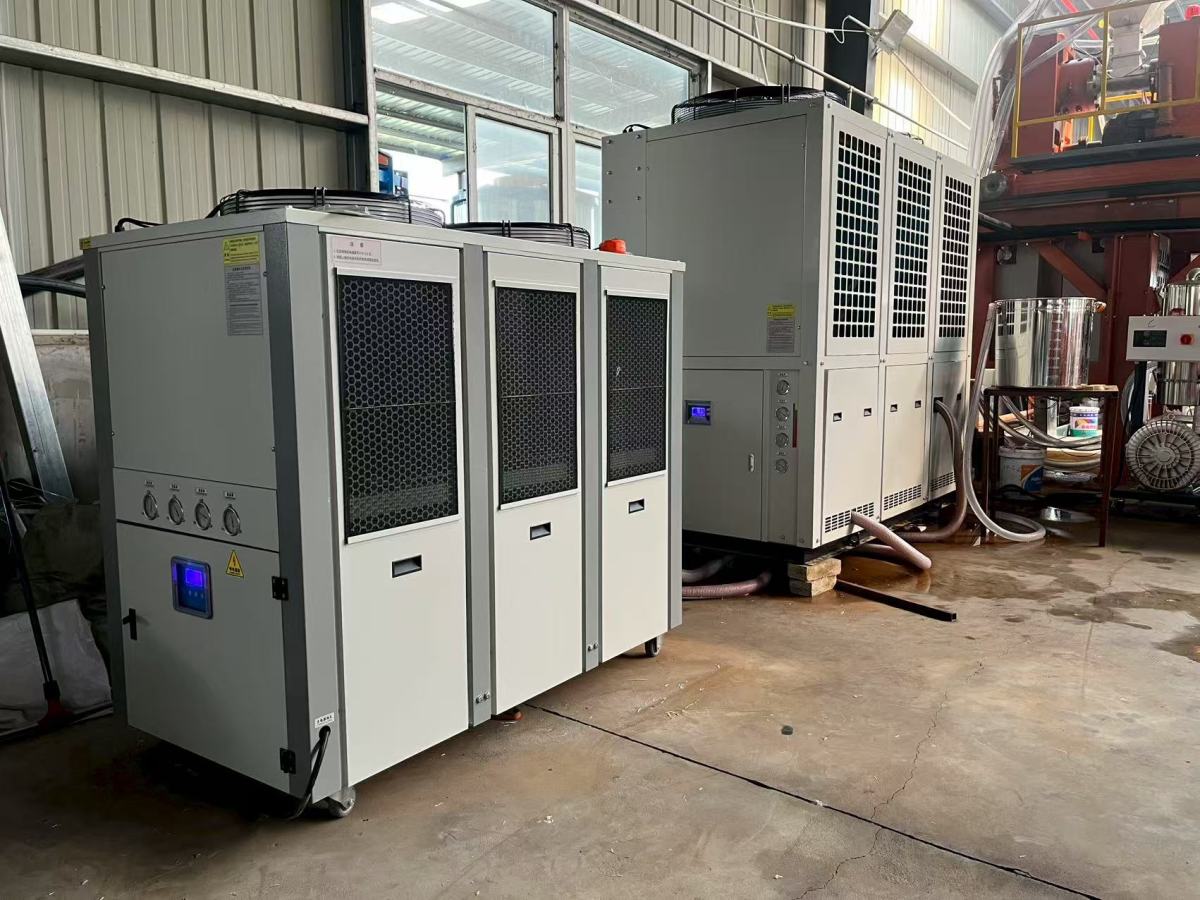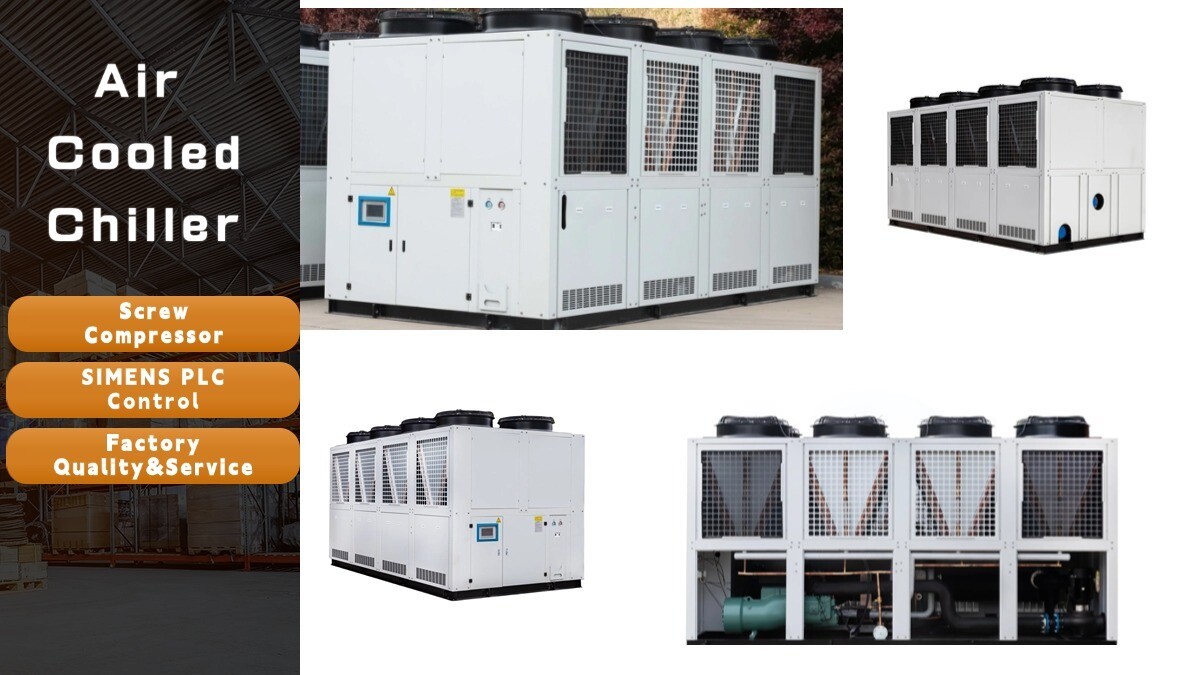Rising ambient temperatures in the summer put additional stress on your chiller.
For facilities that rely on air-cooled industrial chillers, especially rugged screw chillers, proactive summer maintenance is more than just a recommendation—it's a critical necessity. Well-maintained chillers ensure process stability, avoid costly downtime, and maximize energy efficiency.
Darko Chiller's technicians will guide you through the key steps to ensure your industrial chiller operates smoothly and reliably during the hottest months.

1. Why Should You Pay Extra Attention to Your Chiller in the Summer?
Air-cooled industrial chillers work by rejecting heat absorbed by the process to the surrounding air. When ambient air temperatures rise, the chiller's condenser must work harder to dissipate the heat. This results in higher pressure, increased energy consumption, and potential overload. For critical applications like injection molding chillers, failures can mean product damage and production interruptions.
2. Key summer maintenance tasks for screw chillers
(1). Prioritize cleaning the condenser coils
The condenser coils are the core component of heat dissipation in energy-efficient air-cooled chillers. Dirty coils act as insulation, absorbing heat and significantly reducing efficiency.
Cleaning method: Visually inspect the coils for dust, pollen, leaves, and other debris. Use a soft brush or compressed air to remove loose dirt. For a more thorough cleaning, use a commercial coil cleaner and gently rinse with a low-pressure stream of water, taking care not to bend the fragile fins. Cleaning frequency: Once a month during pollen season.
(2). Ensure adequate air circulation around the unit
Chillers require ample cool ambient air. Poor air circulation is a major cause of failure.
Cleaning method: Clear vegetation, inventory, or debris from around the unit. Maintain at least 3-4 feet (about 1.0-1.2 meters) of clearance around the unit, especially around the air inlet and outlet. Check that the condenser fan is operating properly and that the blades are clean.
(3). Check and tighten electrical connections
Vibration from continuous operation, combined with thermal expansion during the summer, can cause electrical connections to loosen. This can lead to voltage drops, inefficient operation, and dangerous arcing.
How to: Completely lock out and tag out the power supply and inspect the terminal connections on the contactor, compressor, and fan. Check for signs of overheating (discoloration, melting). Tighten any loose connections. This work is best performed by a qualified technician.
(4). Monitor the refrigerant level and check for leaks
The correct refrigerant charge is critical to the performance of any chiller. An undercharge can cause the compressor to overrun, leading to high electricity bills and potential failures.
How to: Monitor system pressure and temperature daily. Subcooling and superheat readings are good indicators of charge levels. If a leak is suspected, use an electronic leak detector or soap bubbles to find and repair it before refilling. Be sure to address the root cause of the low fill level.
(5). Inspect and maintain the screw compressor
The compressor is the most critical and expensive component in the screw chiller. It is especially important to be vigilant in the summer.
How to: Check the compressor oil level and condition. Watch for signs of acidity and moisture. Analyze the oil filter and oil separator. Listen for unusual noises that may indicate bearing wear. Strictly adhere to the manufacturer's recommended oil and filter change intervals.
(6). Verify the operation of the cooling circuit
Make sure the process side of the chiller is also optimized.
How to: Check the quality and level of the system fluid (water or glycol solution). Test the concentration of inhibitors and glycol to prevent scaling, corrosion and freezing (to prevent unexpected shutdowns). Clean the suction filter to ensure the pump has normal flow.

3. Special tips for plastic injection molding
Plastic injection molding chillers are directly related to product quality and cycle time. Improper chiller maintenance can lead to unstable cooling water temperatures, which can cause defects such as warping, sink marks, and dimensional inaccuracies. A reliable injection molding machine chiller is crucial to production capacity, making summer inspections especially important.
4. Benefits of Being Proactive
Investing time in summer maintenance will pay off significantly:
Sustained performance: Your screw chiller will maintain setpoints even during peak summer hours.
Energy savings: A clean chiller operates more efficiently, significantly reducing kilowatt-hour consumption. This is the hallmark of a truly energy-efficient air-cooled chiller.
Longer equipment life: Reduced load on the compressor and motor extends the life of the entire industrial chiller.
Avoid costly downtime: A quick inspection can identify。
Jinan Darko Machinery Co., Ltd. is a industrial chiller manufacturer from China, with 15 years manufacturer, R&D experience, all equipment passed CE and ISO9001 Certificate. Main product include air cooled chiller, water cooled chiller, glycol chiller etc. We have professional engineer team can give you any technical support if you are meeting a problem when using industrial chiller.

